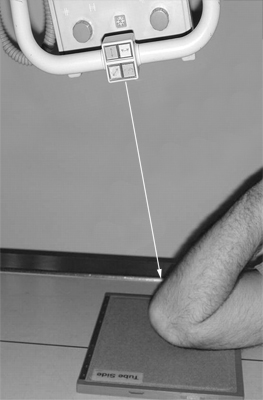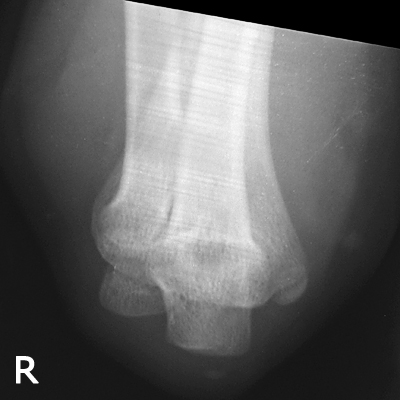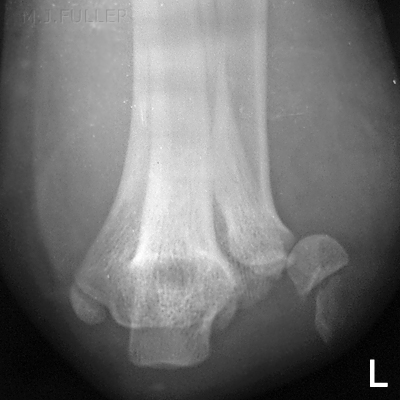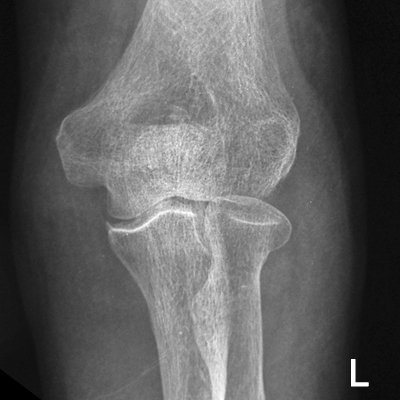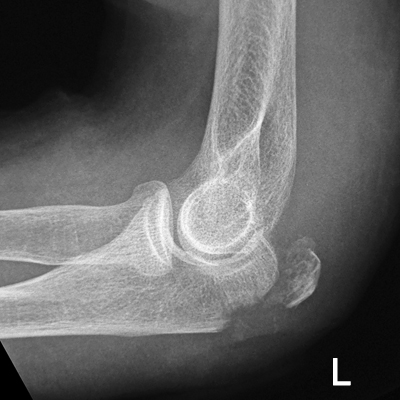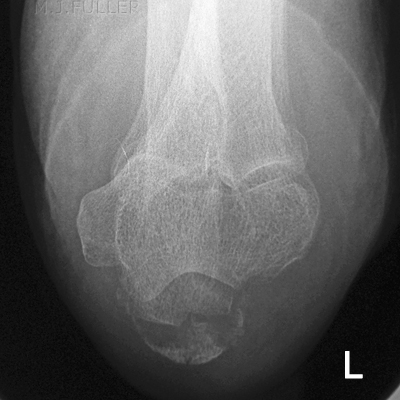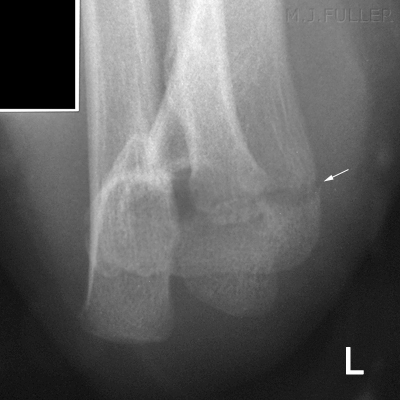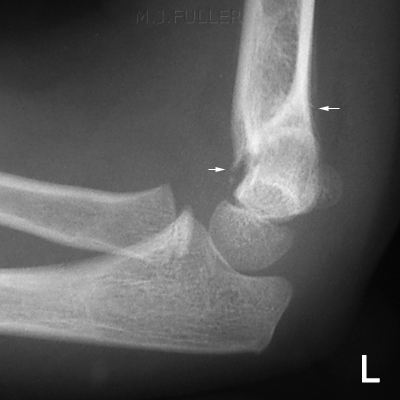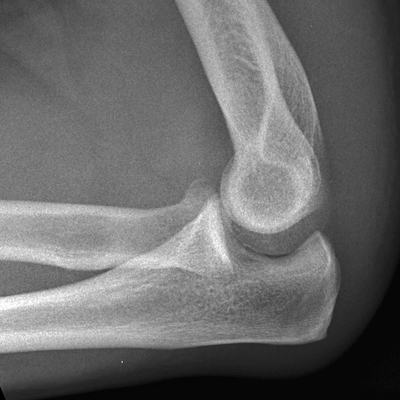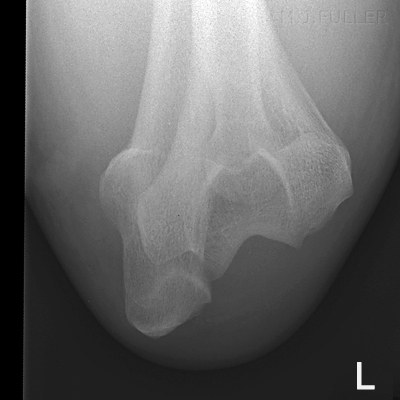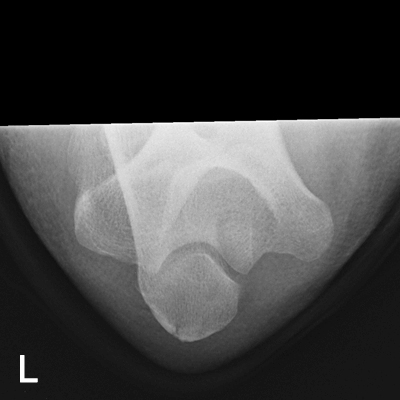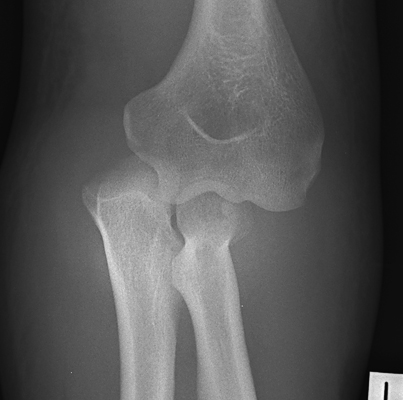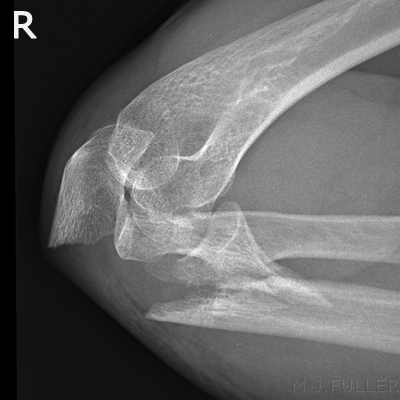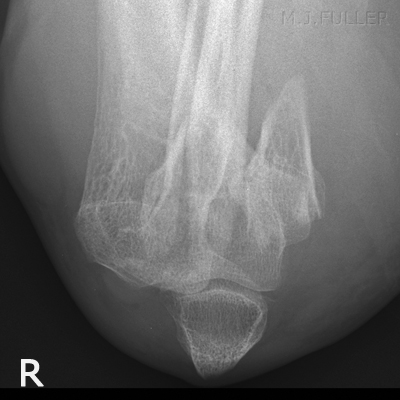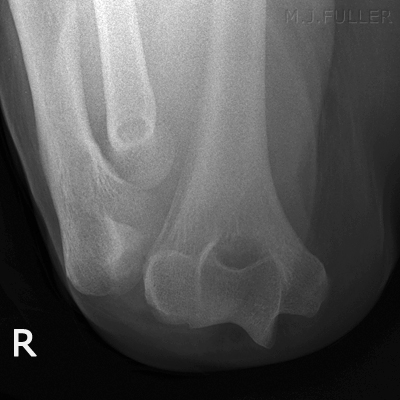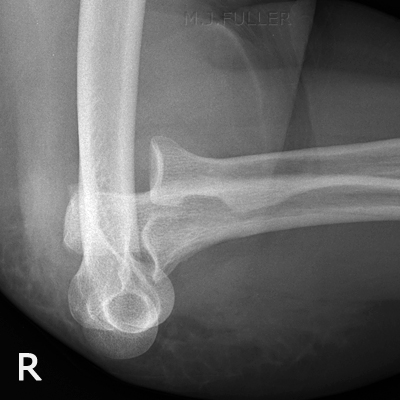Axial Elbow Radiography
RadiographyThe axial view of the elbow is one of those views that stands as a hallmark of innovative radiographers. The radiographer who utilizes this view when required is usually accomplished in plain film radiographic technique.
adapted from <a class="external" href="http://ajs.sagepub.com/content/31/3/466/F1.large.jpg" rel="nofollow" target="_blank">http://ajs.sagepub.com/content/31/3/466/F1.large.jpg</a>The essence of the technique is that you can achieve a satisfactory demonstration of the distal humerus in an AP projection by superimposing the forearm while the elbow is flexed.
Case 1
Case 2
This 96 year old lady presented to the Emergency Department after falling directly onto her left elbow. She was in considerable pain and showed left elbow swelling. She was referred for radiography of her left elbow.
Case 3
This 7 year old girl presented to the Emergency Department after an unwitnessed fall. She was referred for radiography of her left elbow.
The axial elbow view was performed in lieu of the conventional AP view. The lateral view image confirms the supracondylar fracture.
Case 4
This 34 year old man presented to the Emergency Department after falling from a roof. He was examined and found to have a painful and deformed left elbow and was referred for radiography of his left elbow.
Case 5
This 51 year old man presented to the Emergency Department after falling onto both hands. He was examined and found to have a painful and deformed right elbow and was referred for radiography of his right elbow.
Case 6
This 70 year old lady presented to the Emergency Department after falling onto her right side. She was examined and found to have a painful and deformed right elbow and was referred for radiography of her right elbow.
...back to the Wikiradiography home page
...back to the Applied Radiography home page
